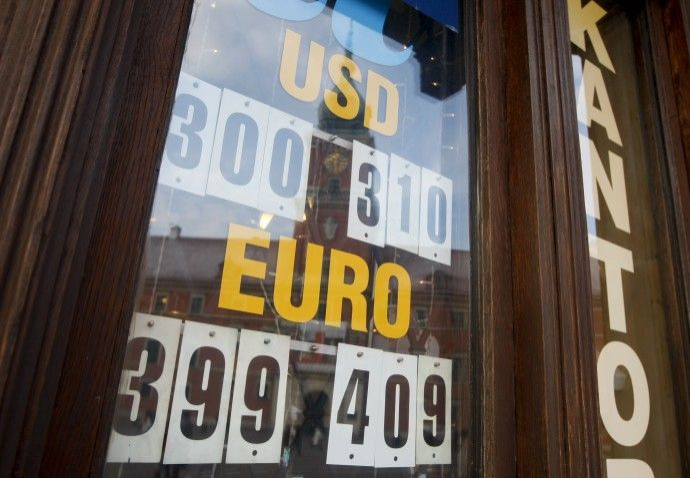Thoughts For 2011: China and Other Asian Central Banks Light The Way

Douglas C. Borthwick is Managing Director of Faros Trading, LLC in Stamford, Conn.
The most important news for currency and commodity markets in 2010 was, in our view, the June move by China to open its currency to a flexible regime. Over the course of the year, we have discussed the ripple effect this has had on currency markets, especially concerning its implication on the US Dollar Index.
We believe that “flexibility” in China means it is actively reallocating reserves. By allowing its currency to strengthen and by reallocating reserves, China must buy fewer U.S. dollars in the market, while selling currently-owned U.S. dollars and purchasing non-U.S. dollar assets.
For the past six months, we have watched China and other Asian Central Banks buy considerable amounts of euros, pounds sterling and yen against the US dollar as they diversify out of their overweight dollar position in their current reserves.
They have also continually sold dollars in the London and New York sessions; dollars that they had purchased nightly against their own currencies in order to keep them from strengthening against the dollar, and to prevent their exports from becoming uncompetitive relative to their peers.
Throughout 2010 China has voiced support for the Euro-zone while quietly chastising the U.S. fiscal situation. We believe Chinese support and the European Central Bank’s (ECB) resolve will put a floor on euro/dollar weakness.
Last weekend China raised rates. This further supports our view of a stronger yuan and a weaker dollar. While many in the market believe that the raising of rates by China is negative for risk, we disagree entirely.
From 2005 through 2008, China consistently raised rates while strengthening their currency, which in turn weakened the Dollar Index by a similar amount. We remain convinced that China will allow the yuan to strengthen by at least 8 percent against the dollar over the course of 2011. Strengthening the yuan is in their interest as it will help combat inflation. It will happen gradually as they increase domestic demand, the overriding theme in their new 5-year plan to be announced in March 2011.
We described in greater detail the “Grand Bargain” between China and the U.S. going into the G20 meetings, wherein a gradually stronger yuan against the dollar was agreed to be in both country's interests.
For this reason we like to short dollar/yuan. In a similar vein we like short dollar positions against the South Korean won, Indian rupee and the Singapore dollar as the other Asian Central Banks allow their currencies to strengthen against the dollar at a similar pace to the yuan.
In the U.S., we believe an unraveling of U.S. Municipal finances given the expiration of the Build America Bonds program will cause growing concern over the US dollar as the US Federal Reserve runs out of options and the [Republican Party] blocks further aid to ailing U.S. states.
President Obama has stated many times since September 2010 that his administrations number one goal is to double U.S. exports over the next five years, a statement backed by the National Export Initiative (NEI) which created a government-wide export-promotion strategy that sounds to us like Japan's old Ministry of International Trade and Industry (MITI).
A weaker dollar is the natural path to achieve this goal. We like shorting the Dollar Index in support of this view.
Throughout 2010 we have pointed to the growing commodity purchases by Asian Central Banks over the past year, as we note China bought 209.7 tons of gold from January to October of 2010. China still only holds about 2 percent of its foreign reserves in gold. India holds about 8 percent. By contrast, the Euro area holds about 61 percent of their reserves in gold and the US has about 74 percent. Asian economies are very underweight gold in their reserves portfolio relative to the West. Given the size of their reserves, any form of catch-up will be very bullish for gold.
While we like selling the US dollar, we have to acknowledge the market's issues and concerns over the euro zone’s peripheral nations, and so we believe that euro/dollar purchases should be paired with purchases in gold.
The last time China moved to “flexibility” from mid-2005 to mid-2008 the trade of long euro/dollar and long gold (both assets being acquired by Asian Central Banks) rose approximately 174 percent, or 40 percent annualized.
So far, from June 2010 the trade has moved 20.6 percent (euro/dollar is up 6.8 percent and gold is up 13.8 percent).
The trade is not without volatility; however, we believe that reserve diversification will continue through the year; and given China and other Asian Central Banks are underweight gold and overweight the US dollar; we are convinced the re-balancing will continue through 2011.
We see 2011 as a continuation of 2010 in terms of the Asian Central Bank re-allocation theme. However, while the pace of US Dollar weakness in 2010 was fueled by QE2 rhetoric, we believe the pace in 2011 will be fueled by concerns over U.S. Municipalities and U.S. States, concerns that will grow to outweigh the issues in Europe that currently hold the market's attention.
© Copyright IBTimes 2025. All rights reserved.





















